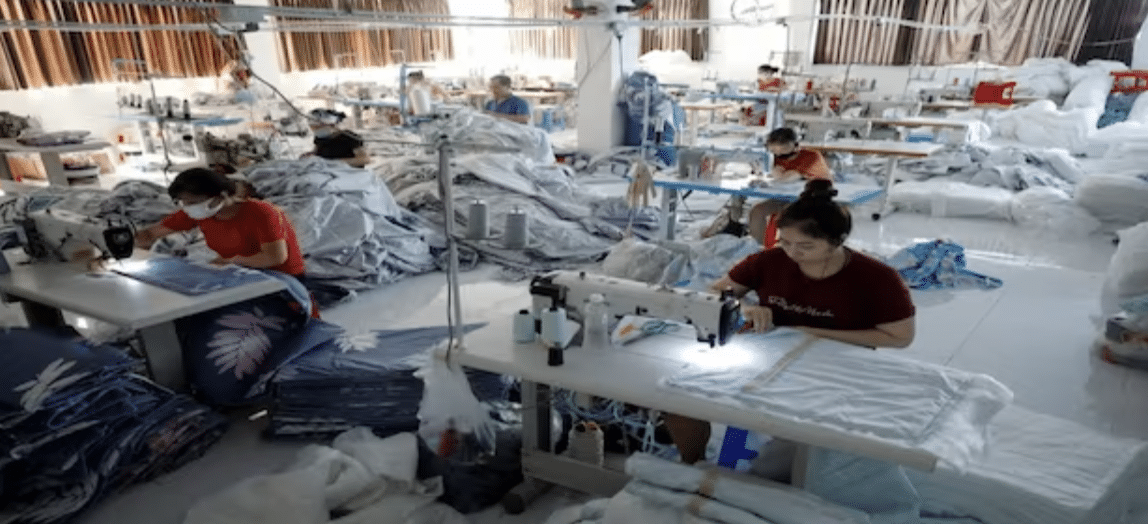The implications of labour shortage can be far-reaching. It could hamper India’s ability to meet domestic demand and fulfil international orders and undermine its potential as a global manufacturing hub.
Every year, across India, 12 million young Indians enter the employable age. In fact, by 2030, the country is projected to have 1.04 billion working persons, in the employable age group.
While other nations of the world grapple with the challenges of ageing workforces and a pronounced scarcity of labour, India uniquely experiences a situation where workforce supply is expanding faster than demand, making it the only country with this trend. However, despite this huge demographic dividend, India is facing a persistent shortage of skilled and unskilled labour.
Shortage of labour in India
Data from 2023 highlights the severity of the issue, indicating that India currently faces a significant shortfall of workers, across multiple disciplines, including factories, engineering units, manufacturing and assembling plants, and infrastructure projects. In fact, a report by the National Skill Development Corporation (NSDC) estimated that India’s skilled labour demand reached approximately 103 million workers in 2022. However, the supply fell short by a staggering 29 million workers. Another report by the Confederation of Indian Industries (CII) — Decoding Jobs, estimated that there would be a reduction in the number of migrants returning to tier-1 cities in 2022, compared to 2021, resulting in a significant gap of 68 percent between demand and supply. This report also estimated a decrease of 32 percent in migrants returning to non-tier-1 cities. It also emphasised the limited availability of talent in white-collar jobs across all levels, including entry-level, mid-level, and upper-level positions. This gap signifies a crucial hurdle in achieving India’s vision of becoming a global manufacturing hub and economic powerhouse. The dichotomy needs to be addressed urgently before it becomes a millstone around the country’s neck.
Causes and implications of India’s labour shortage
Typically, the word labour refers to a group of people who are employed to do physical work. In India, this might comprise groups with low academic qualifications, who earn wages either daily, weekly or monthly, with little or no advantages in terms of guaranteed job security, minimum wage employment, essentials such as identification documents, credit facilities, insurance coverage, access to quality education etc. The annual number of interstate migrants in India is estimated to be between 5 and 6 million, with a yearly growth rate of 4.5 percent. This figure includes both documented and undocumented workers, who engage in seasonal migration across multiple destinations, working for different employers and spanning various industries. Although the Covid-19 pandemic-linked lockdowns were often cited as the main reason why workers left India’s Tier 1 and Tier 2 cities, to return to their hometowns, the truth is that this problem has been building up over the years. A closer look at this landscape will make things clearer.
Migrant workforce: A large number of the country’s labour force comprises migrants, from its hinterland. While their primary occupation may be agriculture, they travel to cities to earn a livelihood during the lean seasons during which farming does not provide them with an income. Though huge in number, these people are not a part of India’s formal workforce. And therein lies the big problem.
Problem of wages: Migrants, along with other informal workers, are disinclined to accept low-quality jobs in urban areas, due to the combination of low wages and inadequate access to housing, healthcare, leave and other essential facilities. Instead, they prefer engaging in local lower-paying work opportunities such as MGNREGS or other casual employment options which meet their immediate survival needs. They have chosen rural poverty over urban poverty.
Education system: The existing education system in India often emphasises theoretical knowledge over practical skills. Vocational training programs are underdeveloped, leading to a mismatch between industry requirements and the skills possessed, even by graduates. This deficiency restricts the talent pool available for the manufacturing sector.
Lack of skills development: A diverse set of specialised skills is essential in the manufacturing industry, encompassing expertise in robotics, automation, engineering, programming, and various other technical domains. Despite the growing reliance on machines and automation, there remains an unfulfilled demand for workers capable of operating and maintaining these technologies. Unfortunately, workers lack access to the training required to stay updated and adapt to evolving modern-day demands.
Migration to other sectors: Service-oriented industries, such as e-commerce, information technology, business process outsourcing (BPO), security, retail and hospitality have lured individuals away from manufacturing and low-paying factory jobs. These sectors offer more attractive remuneration packages and perceived job stability, making it challenging for the manufacturing industry to attract skilled and unskilled workers.
Perception and social stigma: Manufacturing jobs are sometimes associated with low social status and menial work. This perception, combined with a lack of awareness about the potential for growth and advancement in the sector, dissuades employable individuals from pursuing careers in manufacturing.
Tensions caused by resident population: Oftentimes, tensions are caused by the domestic population within a state, resulting in the mass exodus of migrant labour, back to the safety of their hometowns. The implications of the labour shortage can be far-reaching. It could hamper India’s ability to meet domestic demand and fulfil international orders and undermine its potential as a global manufacturing hub. The shortage could also limit technological advancements, as skilled workers are crucial for driving innovation and implementing advanced manufacturing techniques.
Solutions To Bridge The Labour Gap
Addressing the skilled labour shortage requires a multi-pronged approach involving collaboration between government bodies, educational institutions, and industry stakeholders. Here are a few potential workarounds:
Better incentives: By enhancing working conditions within factories and construction sites, as well as implementing benefits like higher wages, emergency healthcare, colonies/ hostels for workers near industrial clusters, etc, companies can enhance their ability to attract as well as retain workers in the manufacturing industry.
Curriculum revamps: Educational institutions must rethink their curricula to include industry-relevant training. Strengthening vocational training programs and promoting apprenticeships can bridge the gap between theoretical knowledge and practical skills.
Public-Private Partnerships: Collaborations between the government and private enterprises to foster skill development initiatives. Industry participation in curriculum design, training programs, and on-the-job training can enhance employability and align individual skills with industry requirements.
Awareness and perception shift: Initiatives must be undertaken to educate students, parents, and society about the opportunities and growth potential in the manufacturing sector. Much like the campaigns to recruit soldiers into the army, highlighting success stories and creating platforms for interaction between industry professionals and students can help change perceptions.
Upskilling and reskilling: Encouraging existing workers to upskill or reskill themselves through targeted training programs can help meet the immediate demand for skilled labour to a great extent. Government and private sector support for such programs can incentivise workers to acquire new skills.
More diversity in the workforce: Greater efforts are required to encourage women to enter the field. Manufacturers must examine the eligibility criteria for the positions they offer and implement workplace modifications that foster diversity and enable the recruitment of a broader range of employable individuals. While the government and industry are working on initiatives such as the e-Shram portal, and the National Database of Unorganised Workers (NDUW) to ease unorganised workers’ access to welfare benefits and much more needs to be done to fill the gap areas. Countries like Germany, Australia, Japan, the Gulf countries and others are opening their doors to low-skilled Indian labour. It is imperative that we act quickly, to prevent yet another drain like the brain-drain, from setting us farther from our dream of becoming the world’s go-to place for everything that can be made by man and machine.



